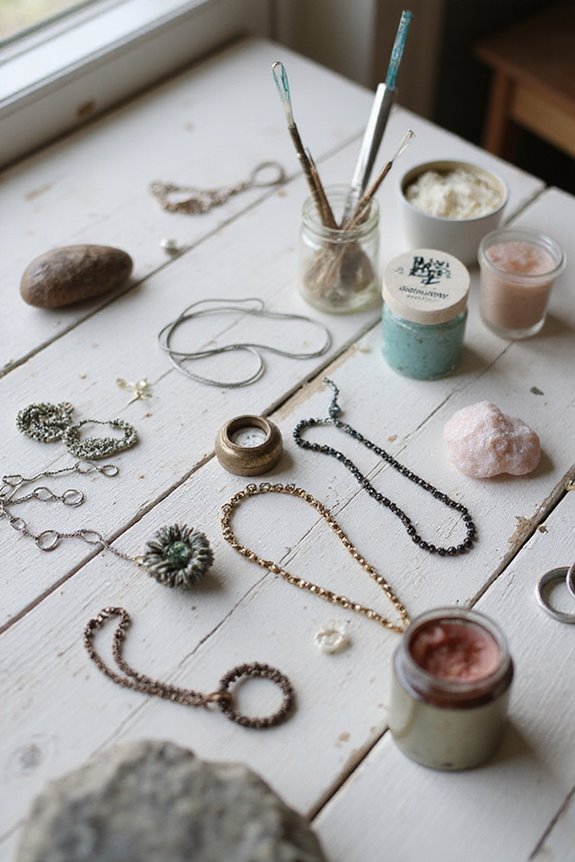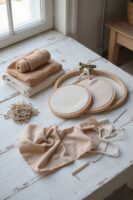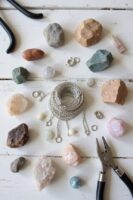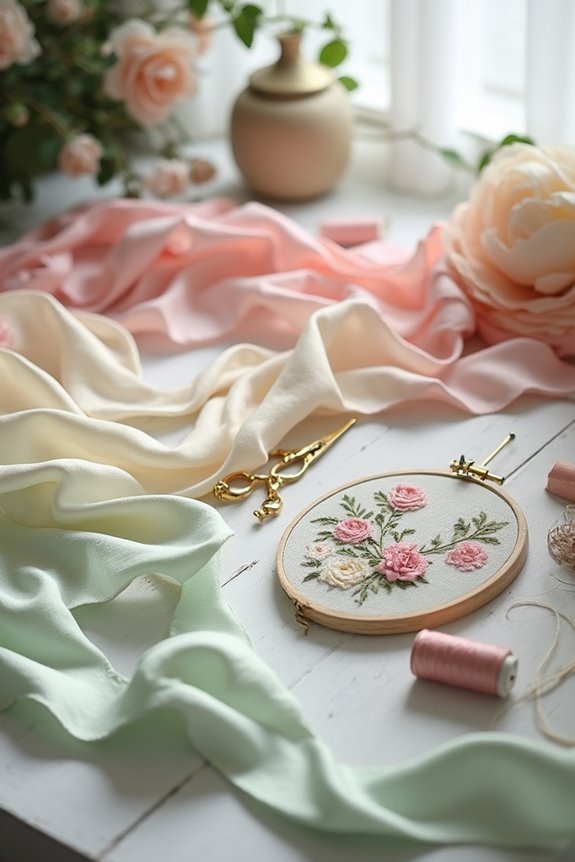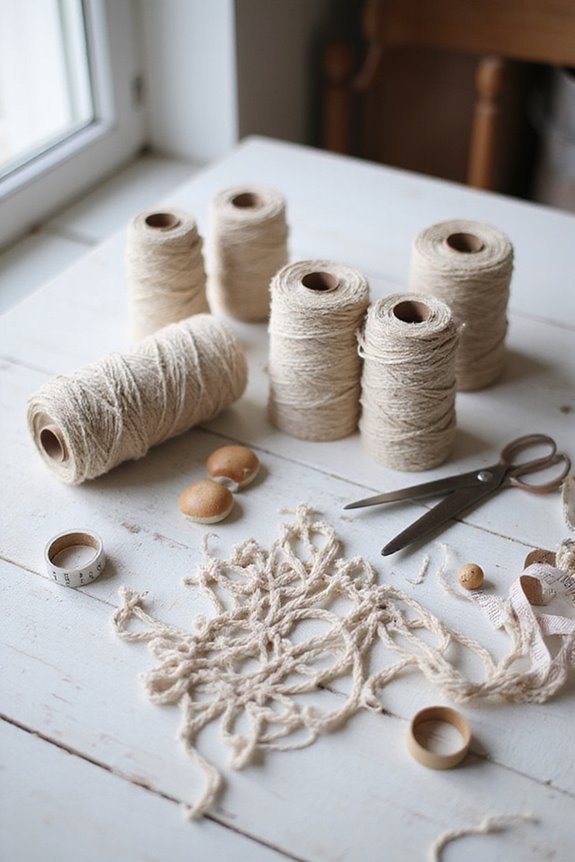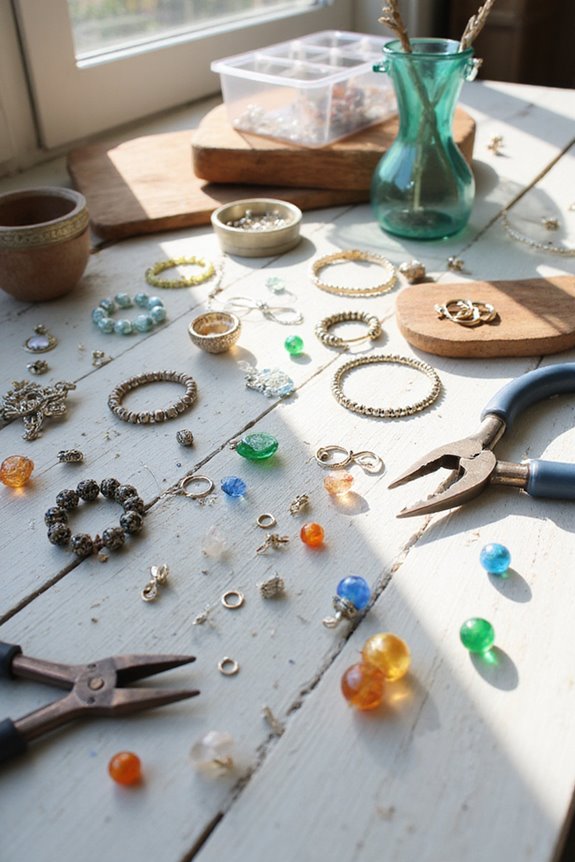In mixed media jewelry, we often blend various techniques to create stunning pieces. 🌟 Here’s what we focus on:
- Metalsmithing with fibers like leather
- Resin to encapsulate unique items
- Textile techniques, like crocheting wire
- Using paper and found objects for creative shapes
- Integrating wire and beads for secure designs
Each technique enhances our designs’ uniqueness. If you keep exploring, you’ll discover even more exciting methods and ideas!
Key Takeaways
- Combine materials like fibers, leather, and metals to create unique contrasts in hardness and texture.
- Use resin layering techniques to embed elements and achieve depth in jewelry designs.
- Incorporate textile techniques, such as woven metal or crocheted wire, for lightweight, intricate pieces.
- Utilize paper and found objects alongside resin to add character and visual interest to jewelry.
- Master wire and bead integration techniques for secure and stylish arrangements in mixed media pieces.
Metalsmithing With Nontraditional Materials
When we plunge into metalsmithing with nontraditional materials, it’s exciting how creative we can get! By incorporating fibers, leather, and even computer chips, we can explore metal layering and create unique designs.
Tips for a Successful Mixed Media Piece:
- Contrast: Pair hard metals like brass with soft materials to enhance texture contrast.
- Techniques: Use basic methods like soldering and sawing to join materials securely.
- Experiment: Don’t shy away from weaving or dyeing techniques for added dimension. Additionally, consider using comprehensive sets that include specialized tools for a more refined finish.
Utilizing Resin in Mixed Media Jewelry
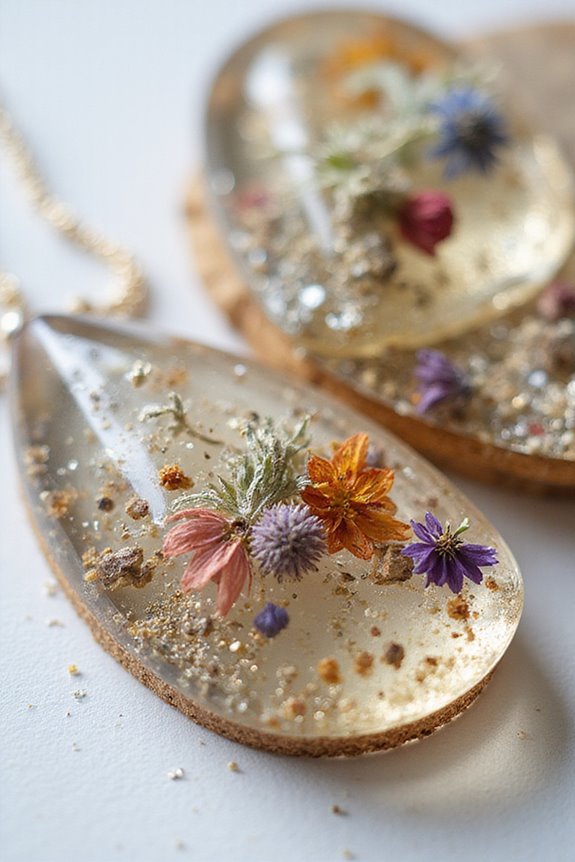
Mixed media jewelry designs open up exciting possibilities, especially when we utilize resin. 🥳 We can choose between two-part epoxy resin or UV resin for our projects. Epoxy requires a careful mix of equal parts resin and hardener, curing for 24–72 hours, while UV lets us work quickly under a light.
Using resin layering techniques, we can embed elements like dried leaves or metallic accents. Make sure everything’s completely dry to avoid cloudiness. 🎨 Pouring resin in stages helps create depth, protecting delicate bits inside. For great results, we need to measure accurately and use protective gear. Let’s also play with colors by adding chameleon powders or alcohol inks for unique effects! 🌈 With practice, we can master these techniques and make stunning pieces. Additionally, incorporating high-quality materials from resin casting kits can enhance the durability and clarity of our jewelry designs.
Textile Techniques for Jewelry Making
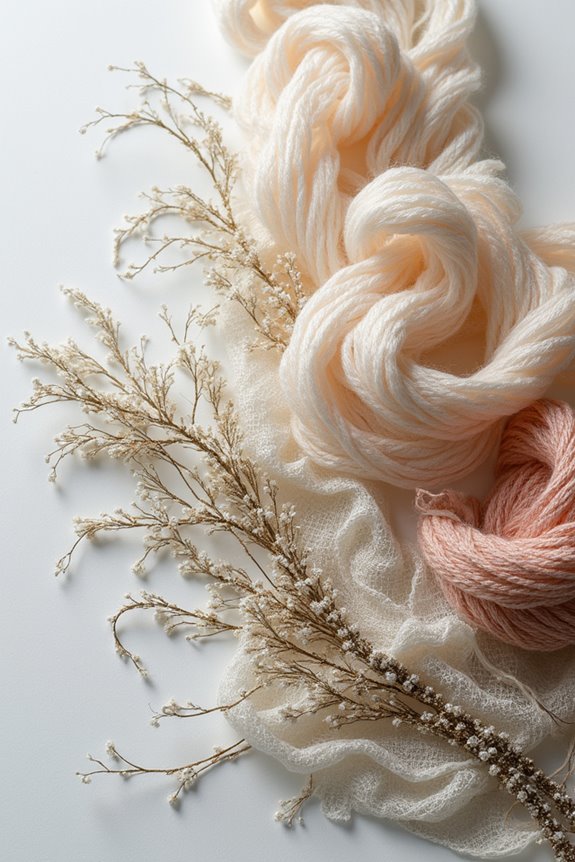
Textile techniques bring a unique flair to jewelry making, offering endless creative options. We can use woven metal and crocheted wire to craft lightweight, intricate pieces that imitate fabric textures. When weaving with fine metal wires, we create lace-like designs or chainmail effects.
🌟 Here are some tips:
- Experiment with different wire gauges for various thicknesses.
- Combine gemstones within your crocheted structures for visual interest.
Crocheted wire allows us to create soft patterns that maintain a strong metal foundation, perfect for airy designs. Utilizing these techniques not only enhances our creative expression but also provides an appealing contrast to traditional metals. Additionally, incorporating beginner-friendly kits can help you get started with essential tools for creating textile jewelry pieces. So, let’s get started and explore the beautiful possibilities in textile jewelry!
Incorporating Paper and Found Objects
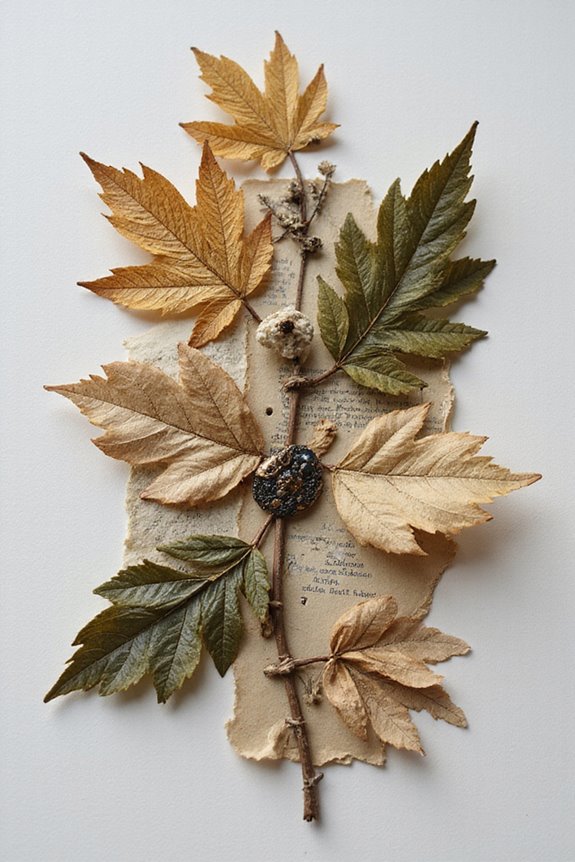
Jewelry making opens up so many avenues for creativity, and incorporating paper and found objects takes it to another level. We can create beautiful paper beads by cutting decorative paper into strips, rolling them tightly, and sealing them with varnish. For unique pendants, let’s cut shapes from colorful paper or even metallic holiday tins.
When we think about found object placement, we can mount items like buttons or bottle caps using a clear-drying glue. 🖌 For added depth, we can layer paper and objects together, applying resin to unify them. Using high-quality materials ensures that our creations remain durable and visually appealing.
Wire and Bead Integration Techniques
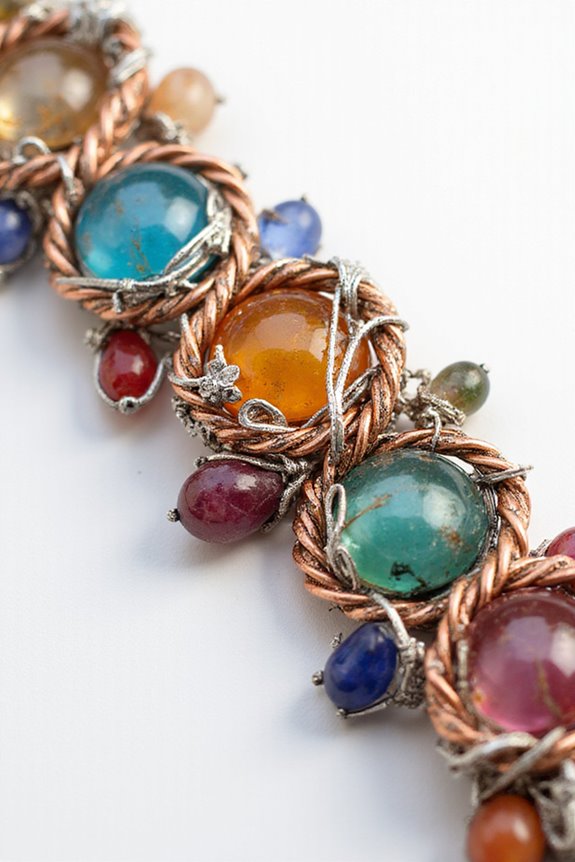
When we immerse ourselves in wire and bead integration techniques, we can access a world of design possibilities.
First, mastering wrapped loops is essential for securing beads. We coil the wire around itself 1.5 to 2 times, ensuring stability and style. Remember to cut the tail flush and tuck it in to avoid snagging.
Next, let’s explore freeform weaving. This technique involves intricate coils around beads, creating beautiful textures. Using various wire gauges can enhance our designs too; choose thicker wire for larger holes and thinner wire for flexibility. Additionally, selecting high-quality sterling silver wire can significantly improve the durability and appearance of our finished pieces.
Lastly, when assembling chain links, keep ends aligned to maintain a seamless flow. With these techniques, we can craft unique, eye-catching jewelry!
Frequently Asked Questions
What Tools Are Essential for Starting Mixed Media Jewelry Making?
To start mixed media jewelry making, we’ll need essential tools like wire-cutting pliers and items for design sketching. A solid toolkit helps guarantee we create beautiful, unique pieces showcasing our creative visions.
How Do I Choose the Right Adhesives for Mixed Media Projects?
When choosing adhesives for our mixed media projects, we should consider adhesive types based on project compatibility, ensuring they bond well with various materials while offering flexibility and durability for our creative endeavors.
What Safety Precautions Should I Take While Working With Resin?
When we immerse ourselves in resin projects, it’s like swimming with sharks—exciting yet risky! We should always prioritize resin safety by wearing protective gear, ensuring good ventilation, and monitoring for any health symptoms while we work.
Can I Mix Metals and Fabrics in the Same Piece?
Absolutely, we can mix metals and fabrics in the same piece! It’s essential we consider metal compatibility and guarantee proper fabric treatment for durability. This combination creates unique, visually striking jewelry we can all appreciate.
How Do I Price Mixed Media Jewelry for Sale?
When pricing mixed media jewelry, we should consider effective pricing strategies and market trends. It’s essential to account for materials, labor, and overhead while ensuring our prices reflect the uniqueness of our creations.

